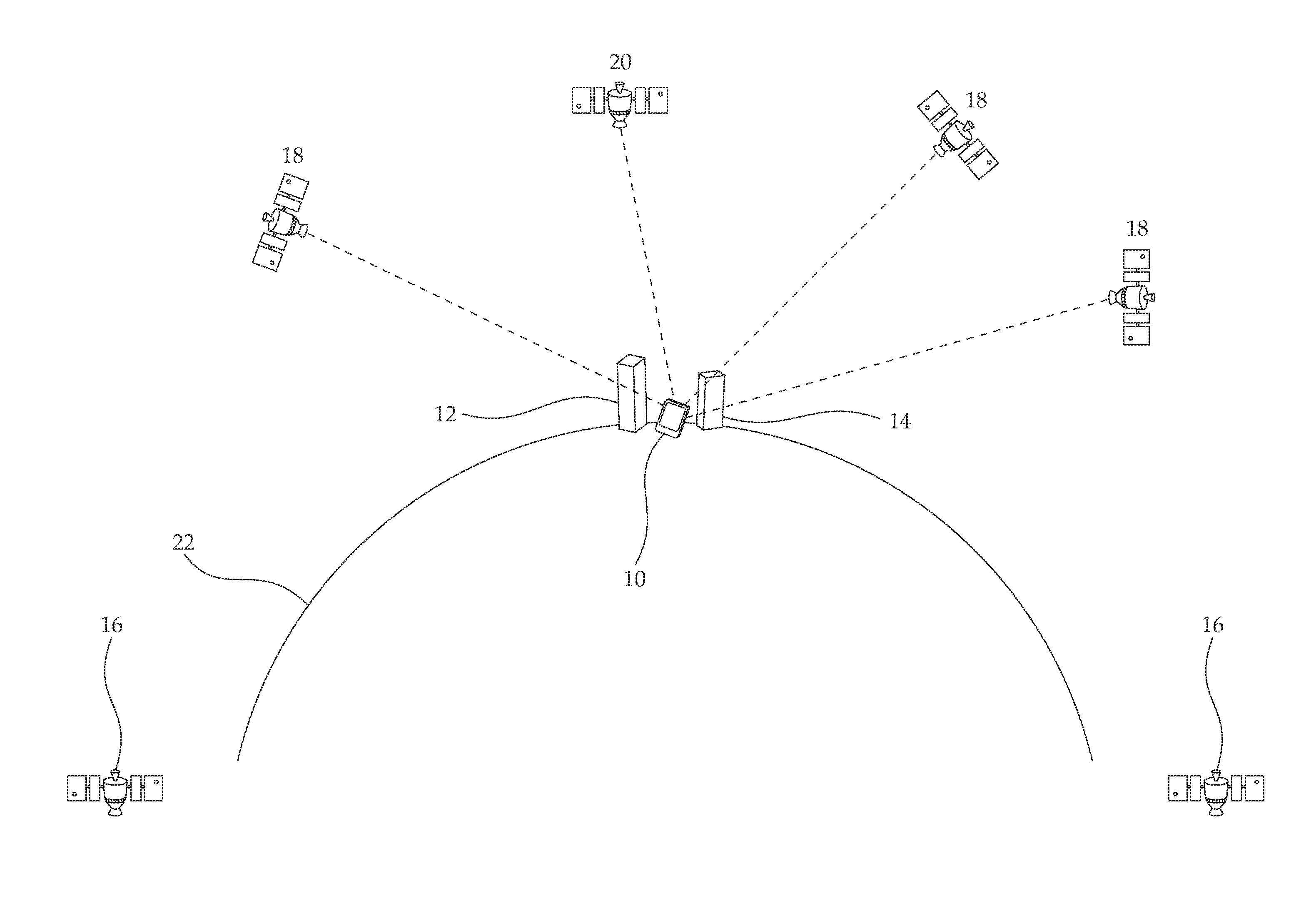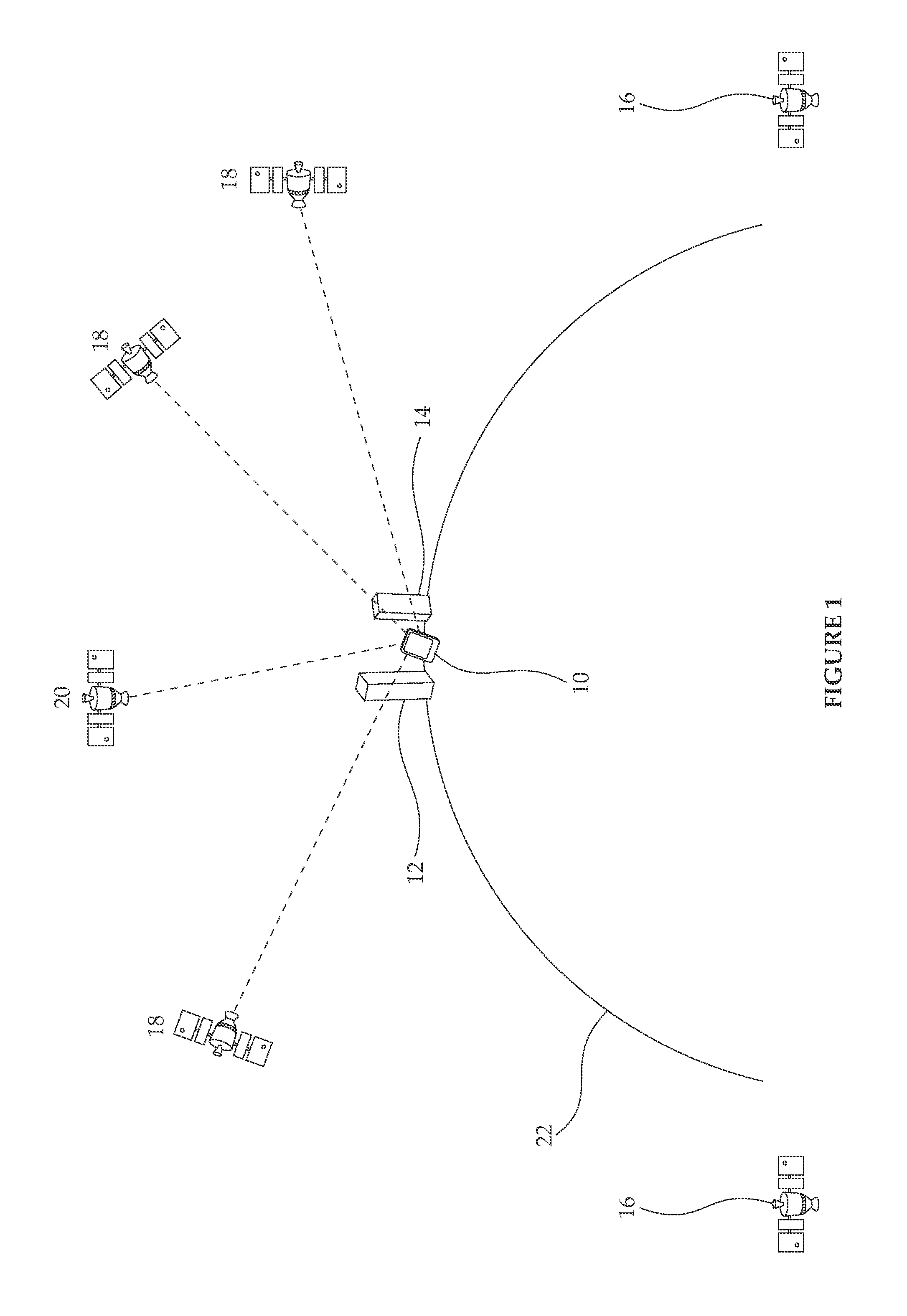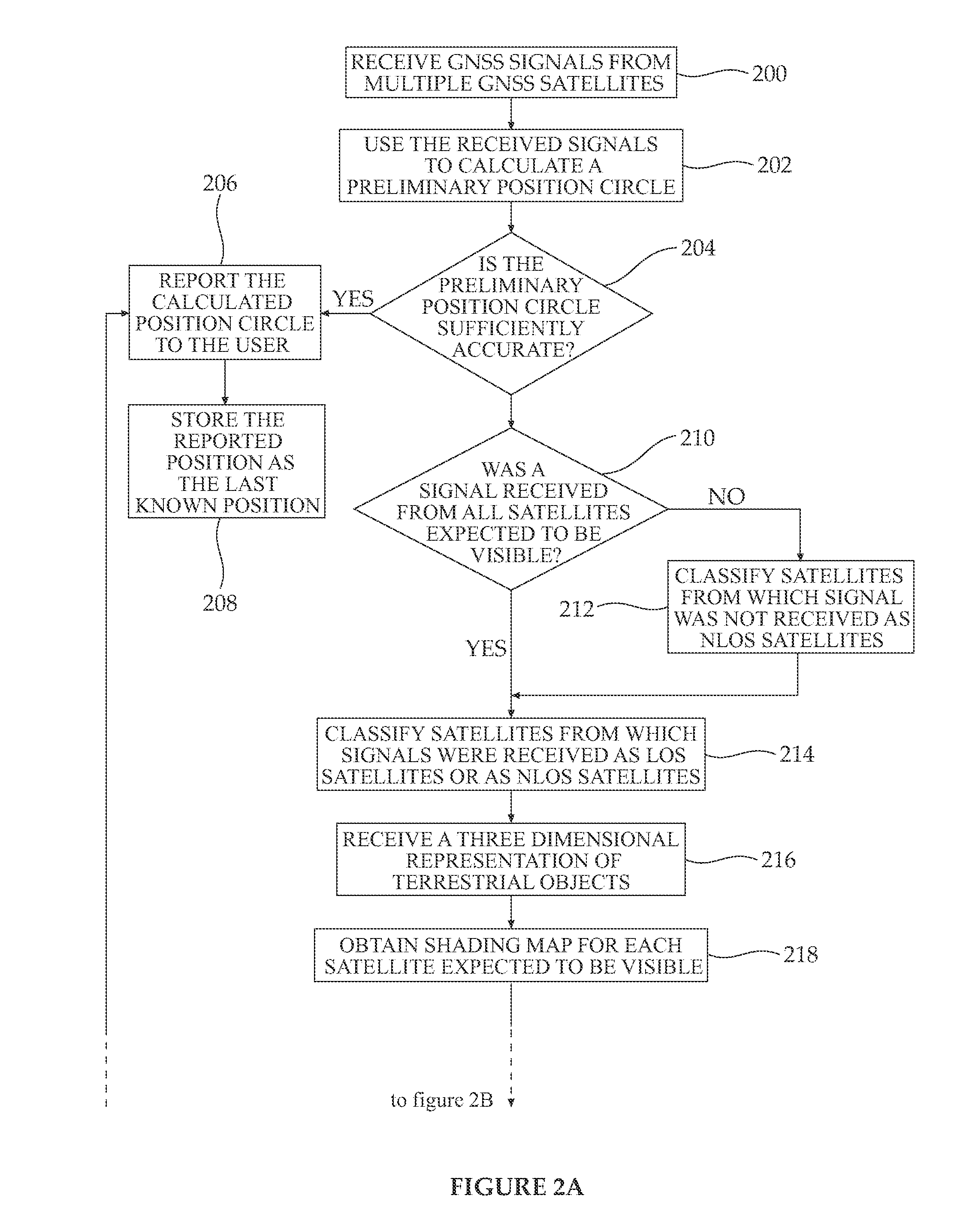Methods, devices, and uses for calculating a position using a global navigation satellite system
a global navigation satellite and receiver technology, applied in the field of global navigation satellite systems, can solve the problems of skewed position computation, reduced calculation accuracy, and greatly limited sky visibility, and achieve the effect of high probability of error
- Summary
- Abstract
- Description
- Claims
- Application Information
AI Technical Summary
Benefits of technology
Problems solved by technology
Method used
Image
Examples
Embodiment Construction
[0071]The invention, in some embodiments, relates to the field of global navigation satellite systems, and more particularly to the field of methods and devices for improving accuracy of position determination by receivers of global navigation satellite systems. Some embodiments of the invention relate to methods for calculating the position of a GNSS (Global Navigation Satellite System) receiver, including:[0072]receiving a plurality of signals from a first plurality of GNSS satellites;[0073]calculating a region in which a GNSS receiver is located based on at least some of the received signals;[0074]for each satellite in a second plurality of GNSS satellites, classifying whether:[0075]the satellite is a line-of-sight (LOS) satellite, having a line of sight to the GNSS receiver; or[0076]the satellite is a non-line-of-sight (NLOS) satellite, not having a line of sight to the GNSS receiver;[0077]obtaining at least one three-dimensional representation of an area including the region;[0...
PUM
 Login to View More
Login to View More Abstract
Description
Claims
Application Information
 Login to View More
Login to View More - R&D
- Intellectual Property
- Life Sciences
- Materials
- Tech Scout
- Unparalleled Data Quality
- Higher Quality Content
- 60% Fewer Hallucinations
Browse by: Latest US Patents, China's latest patents, Technical Efficacy Thesaurus, Application Domain, Technology Topic, Popular Technical Reports.
© 2025 PatSnap. All rights reserved.Legal|Privacy policy|Modern Slavery Act Transparency Statement|Sitemap|About US| Contact US: help@patsnap.com



